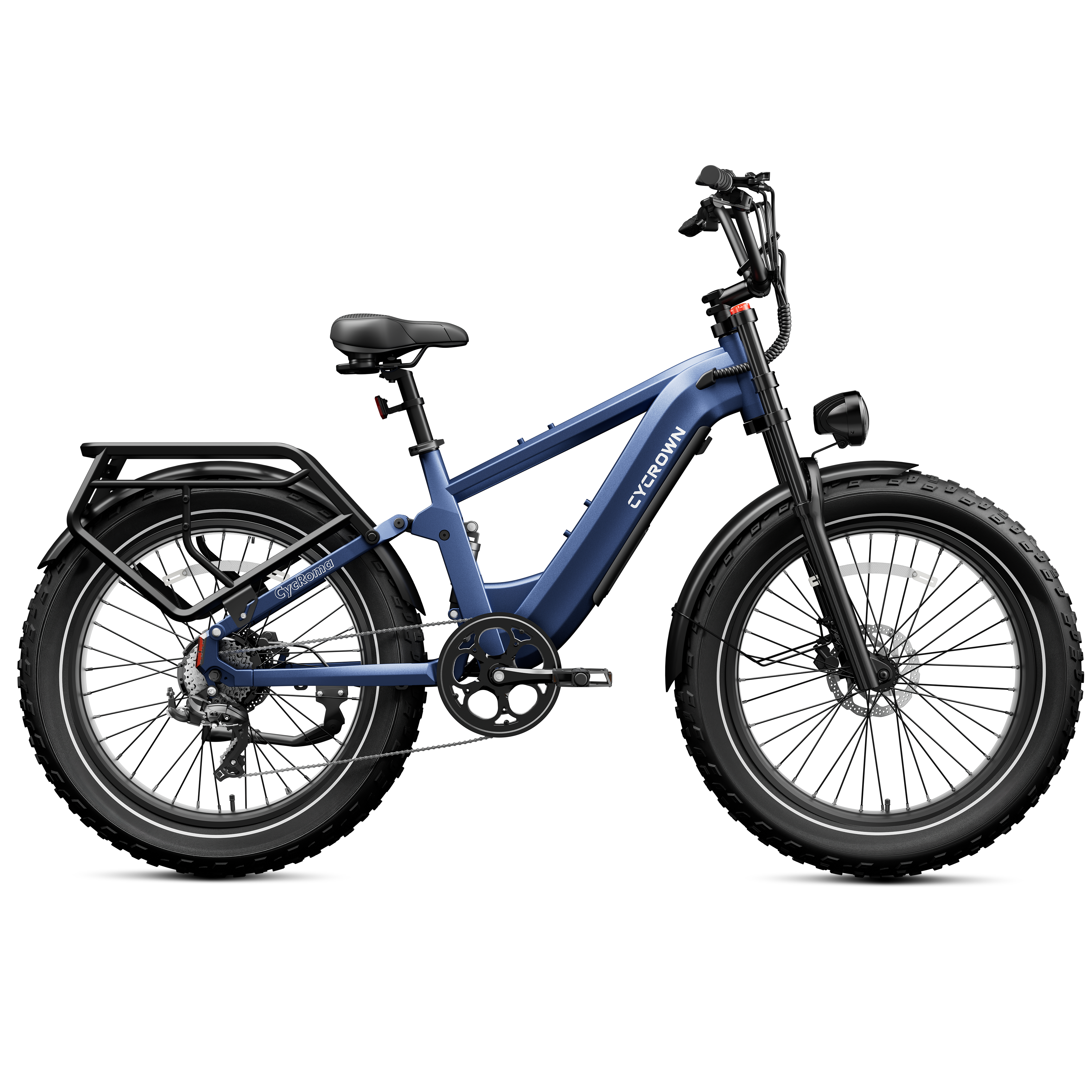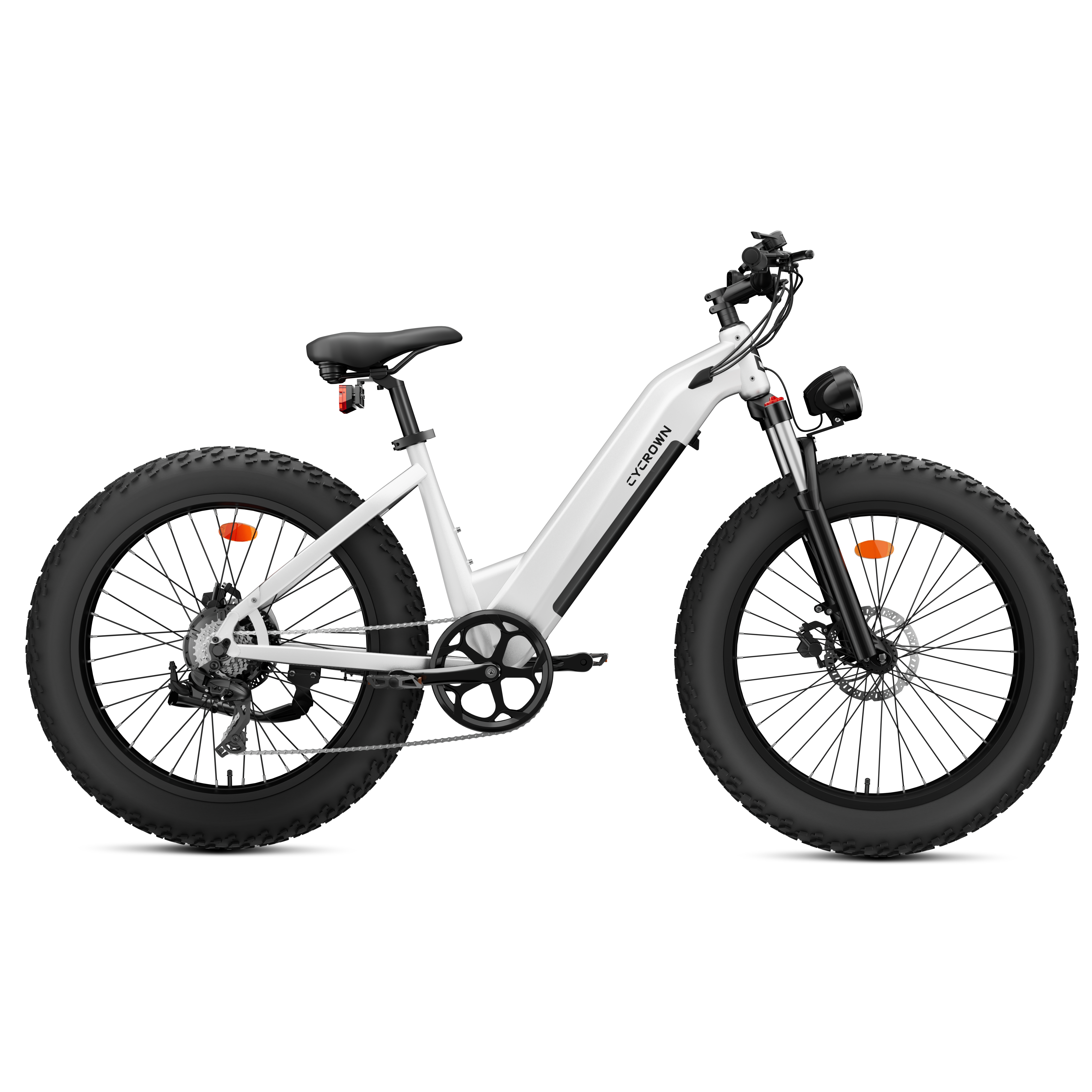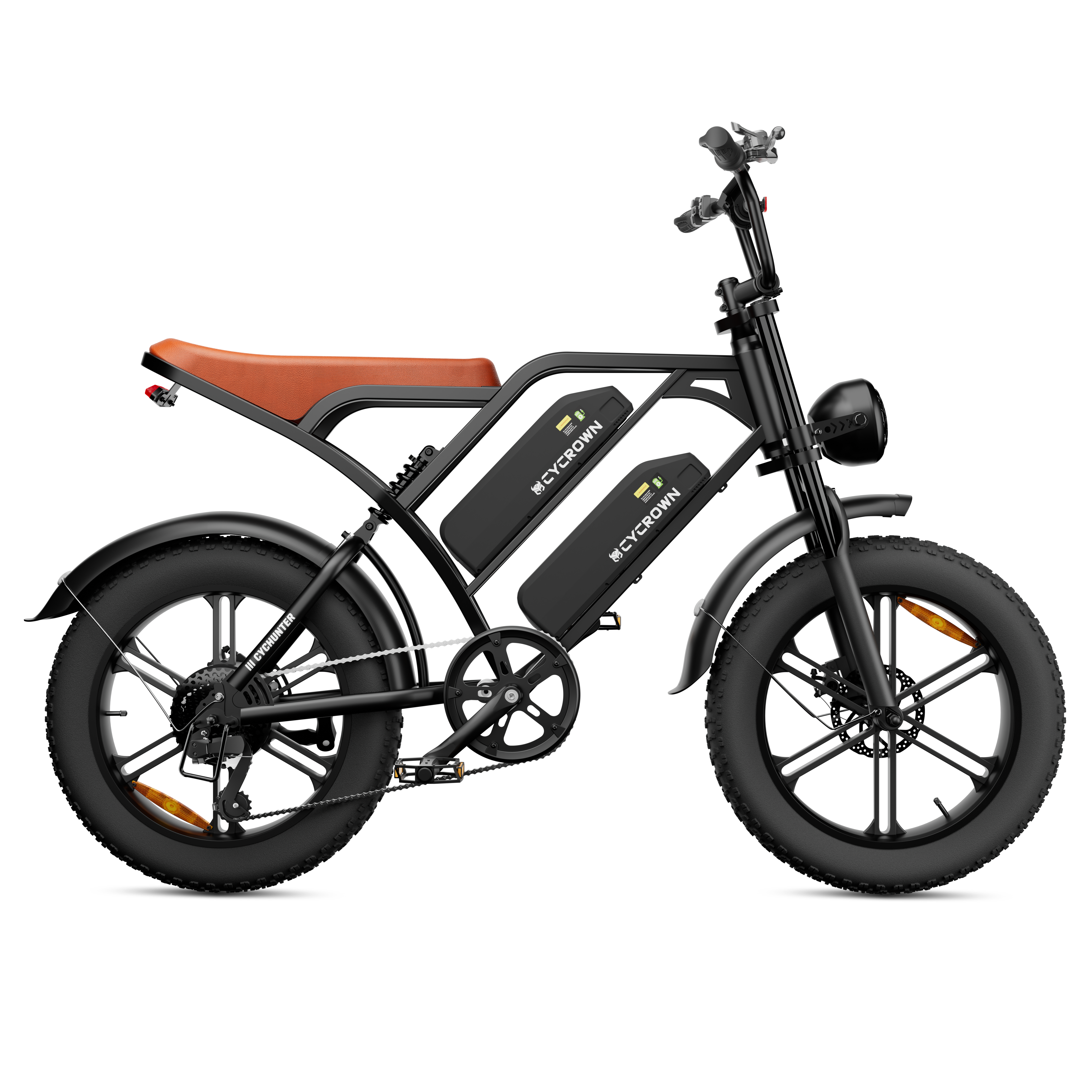Electric bikes are everywhere. From city streets to country trails, Americans are turning to e-bikes for commuting, recreation, and even errands.
But with this surge in popularity comes a lot of confusion. Many riders and would-be buyers are asking: Are electric bikes street legal in the U.S.? The answer isn’t always simple.
U.S. e-bike laws are a patchwork of federal guidelines, state rules, and local ordinances. This guide will break down what you need to know so you can ride your e-bike legally and confidently, wherever you live.
How Federal and State Laws Work for Electric Bikes
The federal government, through the Consumer Product Safety Commission (CPSC), defines an electric bike as a two- or three-wheeled vehicle with fully operable pedals, a motor under 750 watts (about 1 horsepower), and a top speed of 20 mph on motor power alone.
This definition matters mainly for how electric bikes are sold and manufactured in the U.S. it means e-bikes meeting these specs are treated like regular bicycles for product safety. However, federal law does not decide where you can ride your e-bike or what rules you must follow on the street. That’s up to state and local governments.
🚲 Want to see all the different types of e-bikes and how they work? Check out this helpful guide to e-bike types!
The Three Classes of Electric Bikes
To make things more consistent, most states have adopted a three-class system for e-bikes. This system helps clarify what kind of e-bike you have, what rules apply to it, and where you can ride.
🚲 Class 1 Electric Bikes
Class 1 e-bikes only provide assistance when you pedal (pedal-assist), and the motor stops helping at 20 mph. These bikes are great for commuting, exercise, and casual riding.
Because they’re similar to regular bikes, they’re usually allowed on roads, bike lanes, and many multi-use paths. Most states don’t require a license, registration, or helmet for adults riding Class 1 e-bikes.
🚲 Curious about Class 1 e-bikes and why they’re so popular? Don’t forget to read this easy guide to Class 1 electric bikes!
🚲 Class 2 Electric Bikes
Class 2 e-bikes can be powered by both pedal-assist and a throttle, but the motor still stops helping at 20 mph. The throttle feature makes starting from a stop or climbing hills easier.
Class 2 bikes are generally allowed in the same places as Class 1, but the throttle can mean more restrictions on certain trails or paths. Like Class 1, most states don’t require a license or registration, but helmet laws for minors are common.
🚲 Want to know what makes Class 2 e-bikes special? Browse this quick guide to Class 2 electric bikes!
🚲 Class 3 Electric Bikes
Class 3 e-bikes provide pedal-assist up to 28 mph and must have a speedometer. Some states allow throttles, but most limit Class 3 to pedal-assist only. These bikes are designed for faster commuting and keeping up with traffic.
Because of their speed, Class 3 e-bikes are often not allowed on multi-use paths, sidewalks, or certain trails. Helmet use is usually required for all riders, and you often need to be at least 16 years old to ride.
You May Shop:
When an E-Bike Is No Longer an E-Bike
If your e-bike goes faster than 28 mph or has a motor more powerful than 750 watts, it’s usually not considered an e-bike under the law. Instead, it may be classified as a moped, motorized bicycle, or even a motorcycle.
This means you’ll face much stricter requirements—like needing a driver’s license, registration, insurance, and special safety gear such as DOT-approved helmets.
Riding an “over-class” e-bike without following these rules can lead to fines or even having your bike impounded.
Key Rules for E-Bike Riders in the United States
Do You Need a License or Registration
For most people riding Class 1 or Class 2 e-bikes, you don’t need a driver’s license, registration, or insurance. This is true in most states, making e-bikes accessible for all ages.
However, some states have stricter rules for Class 3 bikes, and a few outliers (like Alaska or New Mexico) may require licensing or registration for certain e-bikes. Always check with your state’s Department of Motor Vehicles (DMV) or Department of Transportation (DOT) for the latest info.
🚲 Want a simple summary of electric bike rules in the U.S.? Discover this handy guide to electric bike rules!
Helmet Rules for Electric Bikes
There is no federal law requiring helmets on e-bikes, but many states have their own rules. In most places, helmets are required for riders under 16 or 18, and for anyone riding a Class 3 e-bike, no matter their age.
Some cities and counties have their own helmet laws that go beyond state rules. Even if it’s not required, wearing a helmet is always smart for your safety.
Age Limits for E-Bike Riders
Most states let anyone ride a Class 1 or 2 e-bike, regardless of age. For Class 3 e-bikes, you generally need to be at least 16 years old.
If you’re a parent, make sure to check your local laws before buying an e-bike for your child, and consider their maturity and riding skills.
What Equipment Your E-Bike Needs
To be street legal, your e-bike usually needs a few basic features: working brakes, a white front light visible from 500 feet, a red rear reflector or tail light visible from 600 feet, and sometimes a bell or horn.
Some states require mirrors or other safety equipment, especially for faster bikes. These rules are there to keep you and others safe.
Where You Can Ride Your Electric Bike
Riding on Roads and Bike Lanes
E-bikes are generally allowed on roads and in bike lanes just like regular bicycles. This is true for all three classes. If you’re riding a faster Class 3 e-bike, you may be encouraged (or required) to stick to the road or bike lanes and avoid sidewalks or slower multi-use paths.
Riding on Trails and Paths
This is where things get tricky. Rules for trails and multi-use paths can change from state to state, city to city, or even trail to trail. Class 1 e-bikes usually have the most access and are allowed on many paths and trails.
Class 2 (because of the throttle) and Class 3 (because of speed) are more likely to be restricted or banned from certain trails, especially those marked “no motorized vehicles.” Federal lands, like national parks and forests, may have their own rules, often allowing Class 1 and 2 on bike-legal trails, but always check with the park first.
Riding on Sidewalks
Most states and cities do not allow e-bikes on sidewalks, mainly to protect pedestrians. There are a few exceptions, usually in smaller towns or at very slow speeds, but these are rare. Riding on the sidewalk where it’s not allowed can result in fines or other penalties.
E-Bike Laws in Popular States
✨California
California was one of the first states to adopt the 3-class system. E-bikes are generally allowed on roads and bike lanes, but Class 3 riders must wear helmets and can’t ride on most trails or paths. Some cities add their own restrictions, so always double-check local rules.
✨ Florida
Florida treats most e-bikes like regular bicycles. No license or registration is required, and e-bikes can use most roads and bike lanes. However, local governments can set their own rules for trails and paths.
✨ New York
New York’s laws have changed a lot in recent years. E-bikes are legal, but rules vary between cities. In New York City, for example, there are strict helmet rules for delivery riders and limits on where you can ride.
✨ Texas
Texas uses the 3-class system, but local governments have the power to create their own rules. Always check city bike ordinances before riding on trails or paths.
✨ Colorado, Oregon, and Washington
These states are known for progressive e-bike laws and bike-friendly cities, but access to trails and paths can still vary. Some areas are very welcoming to e-bikes, while others have limits based on class or trail type.
How to Find E-Bike Laws in Your Area
Finding the exact rules for your city or state can be confusing. Here’s how to do it:
- Visit your state’s DMV or DOT website for official rules.
- Search online for “[Your City] electric bike laws” or “[Your County] e-bike ordinance.”
- Check with local parks and recreation departments for trail and path rules.
- Use advocacy sites like PeopleForBikes, which often have up-to-date summaries and maps.
- If you’re still unsure, call your local police non-emergency line or city hall for help.
Conclusion:
E-bikes open up a world of fun and practical transportation, but knowing the rules is key to enjoying your ride without worry.
U.S. e-bike laws are always changing, so keep up to date, respect other riders and pedestrians, and always put safety first.
Check your local laws before you ride, and you’ll be able to enjoy your electric bike on the street with confidence.
Related Products
Frequently Asked Questions
Are electric bikes street legal everywhere in the U.S.?
While generally considered street legal across the U.S., the specific rules for electric bikes vary significantly by state and even local municipality. Most states utilize a three-class system that dictates allowed speeds, motor types, and permissible riding locations, making it crucial to check your specific state and city laws for compliance.
Do I need a license or registration for an electric bike in the U.S.?
For Class 1 and Class 2 electric bikes in the U.S., a driver's license, vehicle registration, or insurance is typically not required in most states. However, for Class 3 e-bikes or those exceeding federal wattage/speed limits, some states may classify them as mopeds or motorcycles, potentially requiring a license, registration, and sometimes insurance.
What is the difference between a Class 1, 2, and 3 electric bike for street legality in the U.S.?
In the U.S., Class 1 electric bikes are pedal-assist only, cutting off at 20 mph. Class 2 bikes also cut off at 20 mph but include a throttle. Class 3 bikes are pedal-assist only (usually) and provide assistance up to 28 mph. These distinctions directly impact where you can ride your electric bike on the street and what safety equipment might be legally required.
Can I ride my electric bike on bike paths and sidewalks in the U.S.?
Access to bike paths and sidewalks for electric bikes in the U.S. varies widely by state and local jurisdiction. Class 1 e-bikes generally have broad access to multi-use paths. However, Class 2 (due to throttle) and especially Class 3 (due to speed) are more frequently restricted or entirely prohibited from certain shared-use paths and sidewalks due to safety concerns for pedestrians.










